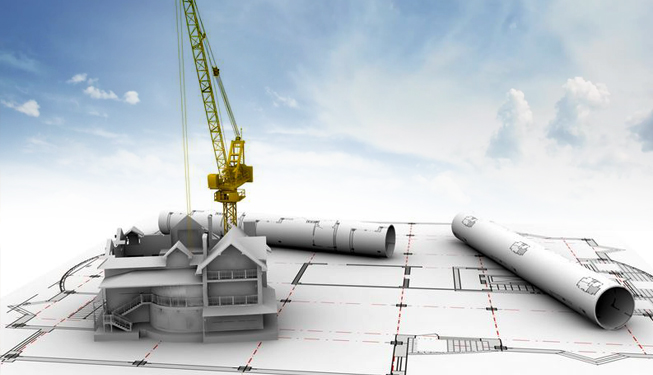Simplify Your Operations with Expert Engineering Support Services: Laying Out Engineer, Measured Structure Surveying, and More
Simplify Your Operations with Expert Engineering Support Services: Laying Out Engineer, Measured Structure Surveying, and More
Blog Article
Optimizing Land Use Planning With Comprehensive Checking Solutions
In the world of land use planning, the integration of detailed evaluating solutions stands as an essential tool in fostering notified decision-making and lasting advancement techniques. By harnessing sophisticated innovations customized for specific information collection and analysis, experts in the field can browse intricacies in site identification, source allocation, and environmental considerations with improved precision and effectiveness (setting out engineer services). The optimization of land usage preparing with checking services is not without its challenges, prompting the exploration of innovative techniques to streamline procedures and remove useful insights for tactical advancement initiatives. As we delve much deeper right into the elaborate web of factors affecting land application, the value of detailed surveying solutions becomes a foundation in shaping the landscapes of tomorrow.
Significance of Comprehensive Checking Solutions

Comprehensive checking services allow planners to examine the viability of land for different functions, identify prospective risks or restraints, and design lasting growth techniques - measured building surveying. By incorporating accurate study data right into land usage strategies, authorities can make certain reliable usage of resources, lessen environmental effect, and promote long-term financial growth
Additionally, thorough checking options help with stakeholder engagement and collaboration by envisioning suggested land use changes and permitting for comments prior to implementation. This positive approach boosts openness, cultivates community trust fund, and ultimately causes much more successful land usage preparation end results. Essentially, the relevance of detailed checking solutions can not be overemphasized in the realm of effective land usage planning.
Advanced Technologies for Land Usage Planning
Using sophisticated modern technologies enhances the precision and performance of land use planning processes. Advanced modern technologies such as Geographic Information Solution (GIS), LiDAR (Light Discovery and Ranging), and remote sensing play a critical duty in contemporary land use planning. construction surveys. GIS allows coordinators to analyze spatial data, identify patterns, and make informed decisions regarding land advancement. LiDAR innovation provides highly accurate elevation information, assisting in surface modeling and flood threat analysis. Remote picking up, via drones and satellites, offers comprehensive imagery for keeping an eye on land modifications and evaluating environmental impacts.
In Addition, Building Information Modeling (BIM) enables coordinators to create 3D designs of structures and framework, facilitating better visualization and planning of land usage projects. Artificial Intelligence (AI) formulas can examine large amounts of data to forecast future land use patterns and enhance preparation strategies. Additionally, progressed evaluating tools like drones equipped with high-resolution cams and LiDAR sensors can promptly check large areas with accuracy, decreasing time and expenses linked with conventional checking approaches. Incorporating these advanced innovations right into land use planning processes can result in more lasting and efficient urban development.
Overcoming Challenges in Site Recognition

Moreover, contrasting rate of interests among stakeholders, such as developers, conservationists, and regional communities, can make complex the site recognition process. To navigate this challenge, organizers should assist in open communication, cooperation, and negotiation to get to consensus on the very best land usage practices that straighten with the needs of all events involved.
In addition, regulative hurdles, zoning restrictions, and land make use of policies can additionally impede the website identification procedure. Planners require to stay upgraded on relevant guidelines, involve with regional authorities, and perform complete research to determine websites that meet all lawful requirements and conformity standards. By proactively dealing with these obstacles, land use coordinators can enhance the site identification procedure and lead the way click for source for efficient land usage preparation initiatives.
Making The Most Of Performance Through Surveying Methods
Browsing the intricacies of site identification processes successfully lays a structure for making best use of efficiency through calculated evaluating strategies in land usage preparation. By using innovative surveying tools such as drones, GIS technology, and 3D laser scanning, land use coordinators can streamline the data collection procedure, leading to even more accurate website assessments and streamlined decision-making. These techniques enable coordinators to gather precise topographic details, recognize ecological restraints, and analyze land viability with higher rate and accuracy than conventional techniques.
In addition, integrating checking techniques with Geographic Details Equipment (GIS) enables for the effective evaluation and visualization of spatial information, assisting in the identification of optimal land use scenarios. By leveraging these devices, organizers can optimize land use intending procedures, lessen job timelines, and decrease overall prices. In addition, making use of real-time surveying information makes it possible for stakeholders to make educated decisions quickly, helping with effective interaction and partnership throughout the planning and growth stages. Generally, the tactical use evaluating methods enhances effectiveness, accuracy, and partnership in land use preparation efforts.
Decision-Making Insights for Development
For effective growth, acquiring beneficial insights for decision-making is crucial in the realm of land usage planning. Decision-making understandings play a critical function fit the future of metropolitan and country locations, ensuring lasting growth and efficient source allocation. Comprehensive checking remedies provide planners and designers with the necessary information to make educated choices that align with the lasting objectives of a community.
By leveraging sophisticated evaluating techniques such as aerial studies, GIS mapping, and 3D modeling, stakeholders can picture the possible influence of development projects and evaluate different circumstances before application. These understandings enable decision-makers to enhance land use, lessen ecological threats, and boost total project expediency.
Furthermore, data-driven decision-making supported by checking options aids simplify the preparation procedure, decrease unpredictabilities, and increase stakeholder self-confidence. By incorporating accurate study information right into the decision-making procedure, designers can identify chances, reduce obstacles, and ultimately produce sustainable land use plans that benefit both present and future generations. To conclude, decision-making insights derived from thorough surveying options are vital for driving impactful and successful development efforts.
Conclusion
In final thought, optimizing land use preparation with comprehensive checking remedies is important for effective and effective growth. It is crucial for effective land usage preparation and sites growth projects.
In the realm of land use preparation, the assimilation of comprehensive surveying options stands as a crucial tool in fostering informed sustainable and decision-making advancement techniques. In significance, the importance of detailed surveying options can not be overemphasized in the world of reliable land usage preparation.
By proactively resolving these difficulties, land usage coordinators can simplify the website recognition procedure and lead the means for efficient land usage planning campaigns.
In general, the tactical usage of checking methods improves effectiveness, accuracy, and partnership in land usage preparation efforts.
In verdict, maximizing land usage preparation with detailed checking services is important for reliable and reliable growth.
Report this page